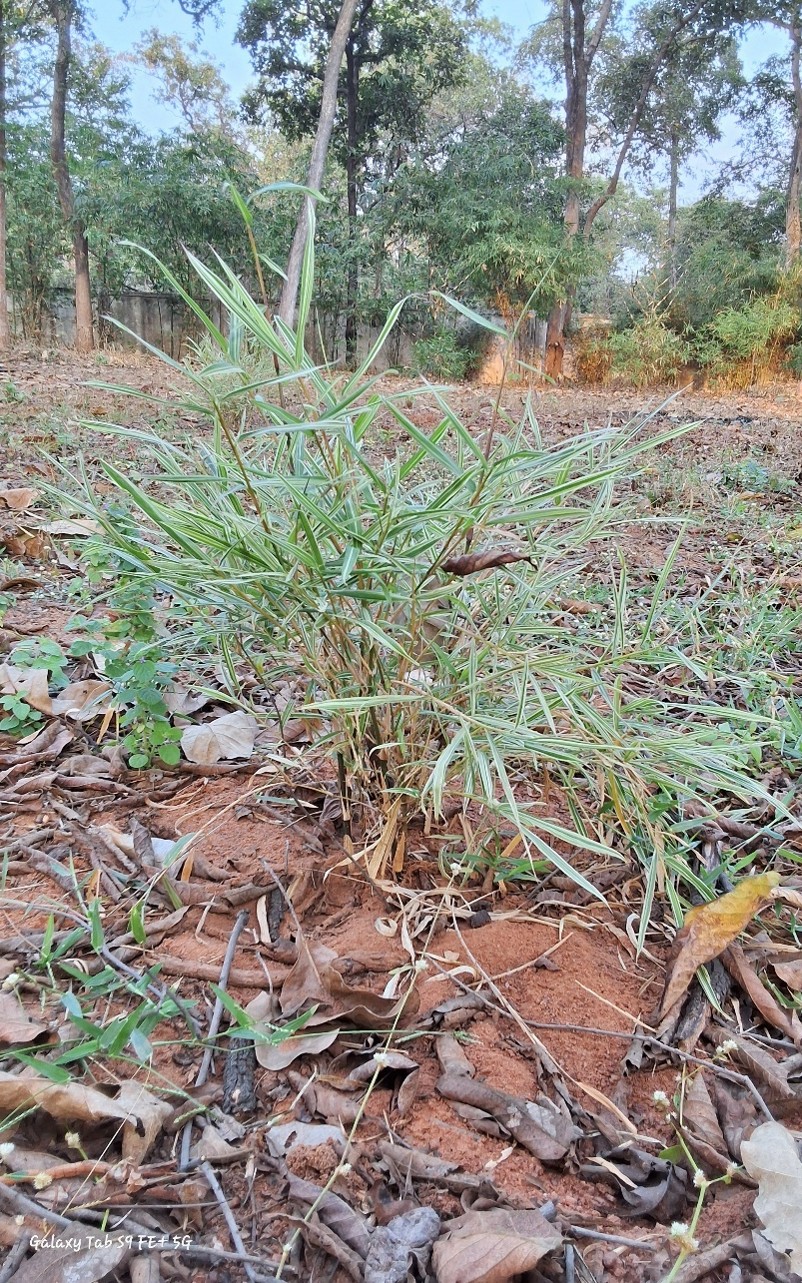Sasa fortunei variegata

Sasa fortunei variegata
commonly known as Variegated Fortune’s Bamboo in English, is also referred to as (Mutsuushi Take Ban-iri) in Japanese. This bamboo variety is a clumping, non-invasive species, which is native to northern Japan and is introduced worldwide for ornamental gardening and landscaping purposes.
Sasa fortunei variegata shares similar characteristics with its parent species, growing to a height of 1.5 to 2.5 meters, with a diameter of 1 to 2 cm. Its culms are green with prominent yellow or creamy white stripes, creating a striking visual effect. The internode length ranges from 4 to 8 cm, and the culm sheath is greenish initially, turning light brown as it matures. The adaxial surface of the culms is glabrous, while the abaxial surface is soft and lightly hairy, with ciliate margins.
The leaves of Sasa fortunei variegata are narrow lanceolate, with pointed tips and a length of 8 to 15 cm and a breadth of 2 to 4 cm. The leaves have a glossy texture and exhibit a contrasting green and cream-colored variegation, making them particularly attractive. The stiff texture of the leaves, combined with the alternate green and white or yellow stripes, gives this bamboo an ornamental and striking appearance.
This bamboo variety thrives in temperate and subtropical climates, typically found at altitudes between 200 to 800 meters above sea level. It prefers moist, well-drained soils that are rich in organic matter and has a preference for slightly acidic to neutral pH but can tolerate a range of soil conditions.
Sasa fortunei variegata grows naturally in forested areas, along streams, and in shaded environments. It is native to the northern regions of Japan and has been introduced for ornamental purposes in temperate regions around the world.
The inflorescence of this bamboo is a small panicle, with flowers arranged in terminal spikes. The flowers are small and inconspicuous, with 3 to 6 stamens concealed within the glumes. Like other bamboos, Sasa fortunei variegata flowers infrequently, typically once every 30 to 50 years, and its seeds often have low viability, making seed propagation difficult.
Propagation of Sasa fortunei variegata is most commonly done through culm cuttings or rhizome division of mature clumps. Seed propagation is rarely used due to the irregular flowering cycles and low seed viability.
This bamboo variety is highly valued for ornamental planting, especially in gardens and landscapes, due to its striking variegated leaves. It is also used as an effective ground cover in shaded or semi-shaded areas and for erosion control, especially in areas prone to soil instability. Additionally, it is often utilized for container planting in pots for decorative purposes.
In summary, Sasa fortunei variegata is a highly ornamental bamboo prized for its variegated foliage. It is suited for ground cover, erosion control, and container planting, and it can be propagated via culm cuttings or rhizome division, with seed propagation being less common due to rare flowering and low seed viability.
Listen Audio:
Need assistance? BRTC Faculty